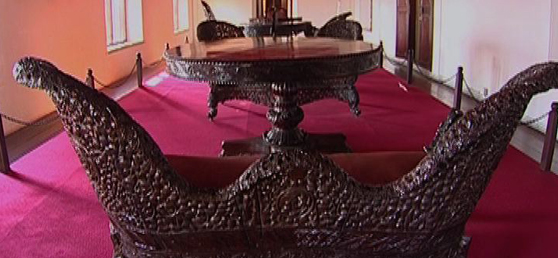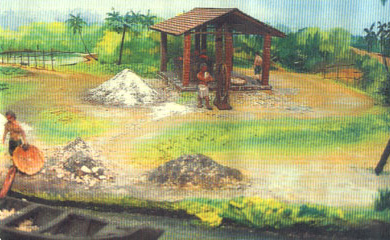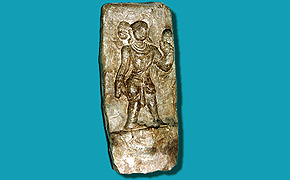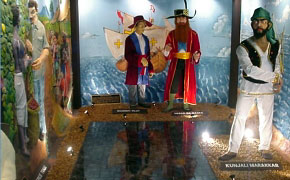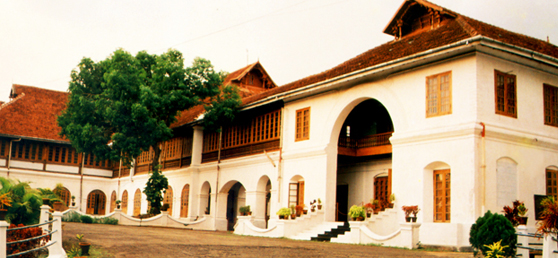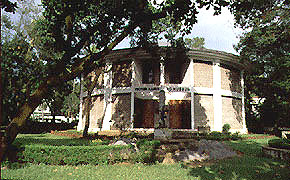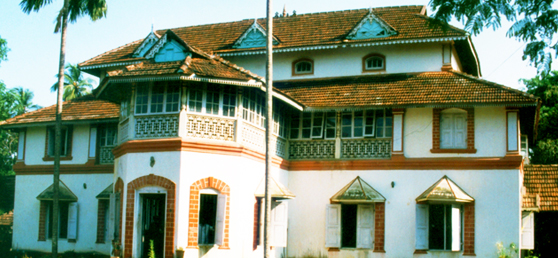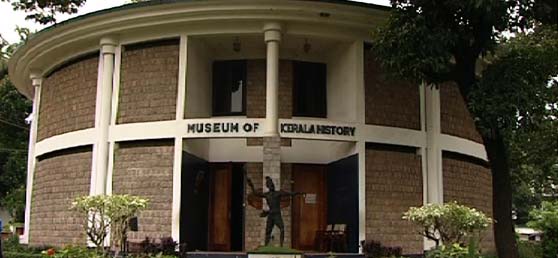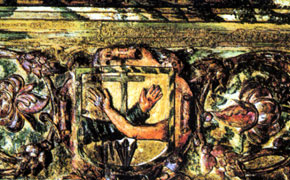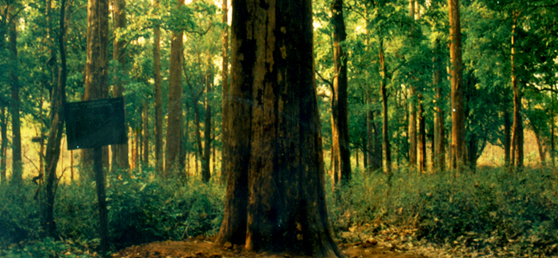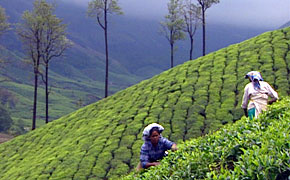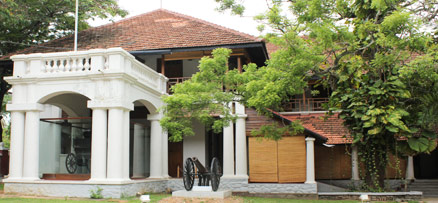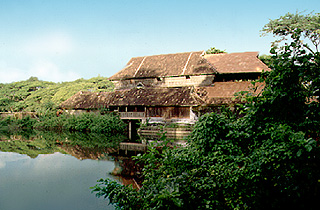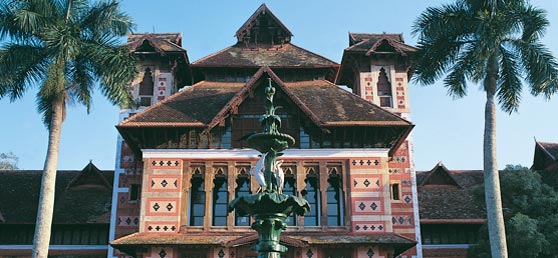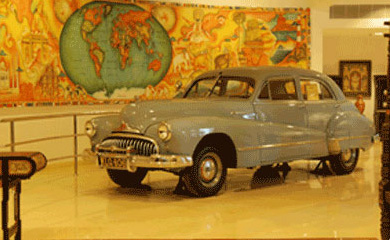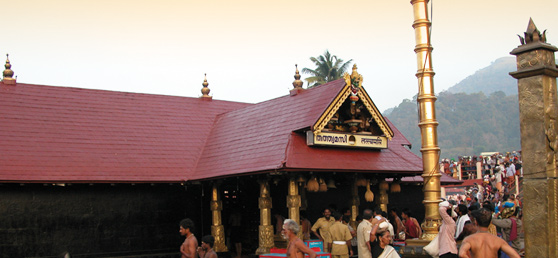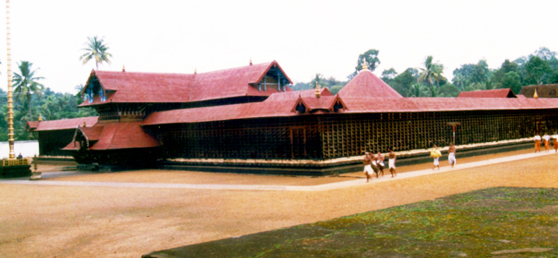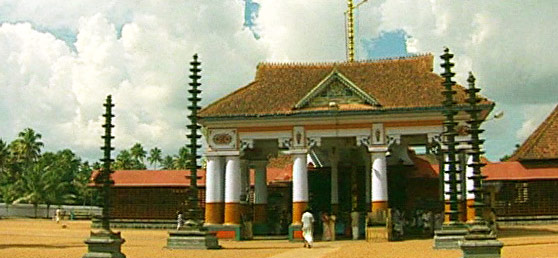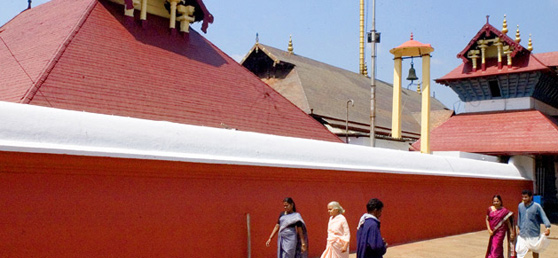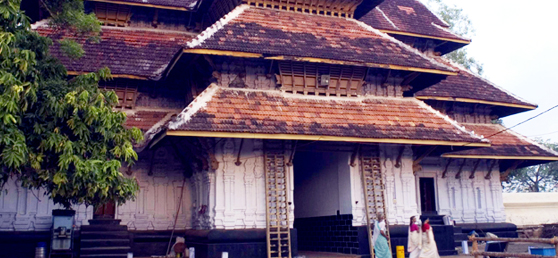| |||||||||||||
|
|||||||||||||
|
Wednesday, March 14, 2012
North Kerala Museums
Central Kerala Museums
| Sampaloor | ||||||||||||||||||||||||||||||||
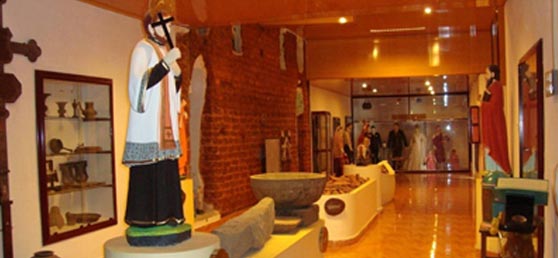 Sampaloor, by the side of the Chalakudy River is known as the Goa of Kerala. Rightfully called so, this place, like Goa witnessed the arrival of a series of clergy. This comprised St. Francis Xavier, St. John Britto, Fr. Joseph Constantine Buski (Veeramamunivar) and Arnos Pathiri. Among them, the first to arrive at Sampaloor was St. Francis Xavier, who came via Marankuzhi, a place located in Kodungalloor (former Muziris). His visits, as per records, were in 1542, 1544, and 1548. At that time the Muziris harbour (present day Kodungalloor) connected India to foreign countries via the sea. Sampaloor was an important center of Jesuits during the time of the Portuguese. Some of the structures still stand testimony to the works of the Jesuits in Sampaloor. They include the St. Paul's Seminary, the St. Paul's Monastery and the St. Paul's Press and a church dedicated to St. Francis Xavier. Gradually San-paul-ur became Sampaloor. Half way though the 17th century St. John Britto, an Italian missionary, came to Sampaloor and lived there for nearly one year. He studied Tamil and Sanskrit and adopted an Indian name - Swamy Arulananda. The altar of St. Francis Xavier's church at which St. John Britto used to celebrate the holy mass is now a protected historical monument. Another member of the clergy, who made his presence felt at Sampaloor after St. John Britto was Arnos Pathiri, who studied at the St. Paul's Seminary and later got ordained there. He made remarkable contributions to the Malayalam literature through his book 'Puthen Pana.' Next to follow was Fr. Joseph Constantine Buski (Veeramamunivar). He came to Sampaloor, while serving in Madurai Mission and later lived there. Fr. Buski's final resting place is also at Sampaloor. The first printing in Malayalam was done at the St. Paul's Press in Sampaloor, which was set up by Jesuit Priests in 1663. The dictionary of 'Prinsa Pathiri,' Tamil grammar of Dacosta Pathiri, and the books of Dinobili were printed in this press. Sampaloor thus became a great centre for language-nurturing in south India. The arrival of the clergymen to Sampaloor in the mid 16th century and the developments that took place all later became part of the ecclesiastical history of Kerala. Sampaloor also went through an unfortunate phase in the course of its history, when it was devastated in an attack by Tippu Sultan, who was fighting the British during the middle periods of the 18th century. Later, the church got reconstructed during the time of Bernadian Bechinelly, who was the vicar apostolate of Varapuzha in 1862. The present church was blessed in 1979. Historical museum of Sampaloor When samaploor was the centre of Jesuit Missionthere wereSt. Paul's seminary, St, Paul's Press, St. Paul's Monastery, And St. Francis Xavier's Church which were destroyed by Tippu the invader. the Cannon balls used during the time of Tippu, holy vestments of the priests of the Monastery, Tablets that describe the old liturgical order, instruments used to make the hosts, Tabernacle of theold church, statues ofsaints made of wood and metals, Lamps used for adoration, lamp-sticks, the Cross made of metal belongs to 15Th century and ''Vazhuthayodukal" of the same century are some of the attractions of this Museum. Anglo-Indian Cultural museum A sight of Anglo-Indian wedding ceremony, Anglo-Indian Traditional dress for women and men such as Kabaya, Madirasi thuny, a collection of coat, Suit, tie, bohatt, their traditional ornaments like Cothigna, Arulikka mala, Pinnu mala, Wedding ring, and their traditional foods are some of the sights inside this museum. Address St. Francis Xavier Church Sampaloor Palayamparambu P.O. Pin 680 741 Ph. 0480 2719079
|
South Kerala Museums
|
|||||||||||||||||
| Kuthiramalika Palace Museum | |||||||||||||||||
 Location: Adjacent to Sree Padmanabhaswamy Temple at East Fort in Thiruvananthapuram. Visiting hours: (Open 0830 - 1300 hrs, 1500 - 1730 hrs. Closed on Mondays) The palace was built by Maharaja Swathi Thirunal Balarama Varma - the King of Travancore, who was a great poet, musician, social reformer and statesman. This rare specimen of workmanship in the traditional Travancore style of architecture has exquisite wood carvings. The palace museum displays paintings and various priceless collections of the royal family and is located near the Padmanabha Swamy Temple. Entrance fee: Adults: Rs. 10, Children: Rs. 3, Foreigners: Rs. 20, Camera permit (outside): Rs. 15, Video: Rs. 500. Getting there: Nearest railway station: Thiruvananthapuram Central, about 1 km. Nearest airport: Thiruvananthapuram International Airport, about 6 km.
|
Some of the best Kerala Pilgrim centres
| Sree Padmanabhaswamy Temple | ||||||||||||||||||||||||||
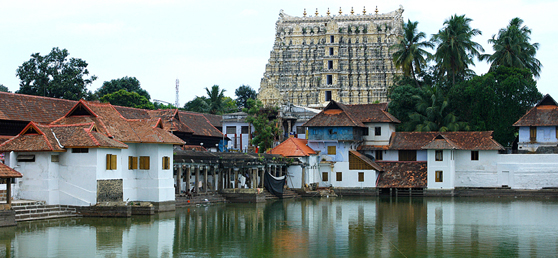 Temple location and history Located inside the East Fort in Thiruvananthapuram, the capital city of the State of Kerala in India is the Sree Padmanabha Swamy temple dedicated to Lord Vishnu. This temple is a blend of the Kerala and Dravidian styles of architecture. The history of Sree Padmanabhaswamy Temple dates back to 8th century. It is one of the 108 sacred Vishnu temples or Divya Desams in India. Divya Desams are the holiest abodes of the Lord Vishnu that are mentioned in the works of the Tamil Azhvars (saints). The presiding deity of this temple is Lord Vishnu, reclining on Anantha, the hooded Serpent. Marthanda Varma, the noted among Travancore kings did a major renovation to the temple and it resulted in the present day structure of the Sree Padmanabhaswamy temple. It was Marthanda Varma who introduced the Murajapam and Bhadra Deepam festivals in the temple. Murajapam, which literally means continuous chanting of prayers, is still conducted in the temple once in six years. In 1750, Marthanda Varma dedicated the kingdom of Travancore to Lord Padmanabha. Marthanda Varma vowed that the royal family will rule the state on behalf of Lord and he and his descendants would serve the kingdom as Padmanabha Dasa or the Servant of Lord Padmanabha. Since then the name of every Travancore King was preceded by the title Padmanabha Dasa. The donation of the kingdom of Travancore to Padmanabhaswamy was known as Thripadidanam. The current head of the Travancore Royal Family is Uthradom Thirunal Marthanda Varma. Thiruvananthapuram, the capital city of Kerala takes its name from the presiding deity of the Sree Padmanabha Swamy temple, who is also known as Anantha (one who reclines on the Serpent Ananatha). The word 'Thiruvananthapuram' literally means - the land of Sree Anantha Padmanabhaswamy. The Sree Padmanabhaswamy temple as per belief is located at a place that is considered as one of the seven Parasurama Kshetras. And references of this temple are there in texts like the Puranas, viz. the Skanda Purana and Padma Purana. The temple stands close to the holy tank - Padma Theertham, which means 'lotus spring.' The shrine is currently run by a trust headed by the erstwhile royal family of Travancore. The Idol The idol of the presiding deity of the Sree Padmanabhaswamy Temple is noted for its composition, which has 12008 salagramams, which were brought from Nepal, taken from the banks of the River Gandhaki. The garbhagriha or the sanctum sanctorum of Sree Padmanabhaswamy temple is located on a stone slab and the main idol, which is about 18 ft long, can be viewed through three different doors. The head and chest are seen through the first door; while the hands can be sighted through the second door and the feet through the third door. Aesthetics and architecture The temple architecture stands out for its work in stone and bronze. The temple interiors are adorned by beautiful paintings and murals. Some of them are that of the life-size images of Lord Vishnu in the reclining posture, Narasimha Swamy (half-lion, half man incarnation of Lord Vishnu), Lord Ganapati and Gaja Lakshmi. The temple has a dhwaja stamba (flag post) that is about 80 ft high and is covered with gold plated copper sheets. The temple also has some interesting structural features in the form of Bali Peeda Mandapam and Mukha Mandapam. These are halls, decorated with beautiful sculptures of various Hindu deities. Another structure that captures attention here is the Navagraha Mandapa the ceiling of which displays the navagrahas (the nine planets). Broad corridor with 365 and 1/4 sculptured granite stone pillars Extending from the eastern side into the sanctum sanctorum is a broad corridor which has 365 and one-quarter sculptured granite-stone pillars with beautiful carvings. There is a ground floor below under the main entrance in the eastern side, which is known as the nataka sala, where Kerala's classical art form - the Kathakali is performed during the annual ten-day festival at the temple, held during the Malayalam months of Meenam and Thulam. Worship time at the Sree Padmanabhaswamy temple Morning hours: 03:30 a.m. to 04:45 a.m. 06:30 a.m. to 07:00 a.m. 8.30 a.m. to 10:00 a.m. 10:30 a.m. to 11:00 a.m. 11:45 a.m. to 12:00 a.m. Evening hours: 05:00 p.m. to 06:15 p.m. 06:45 p.m. to 07:20 p.m. Please note that the temple worship timings are subject to change during festival occasion. Dress code to be followed at the temple: Only Hindus are permitted inside the temple. There is a strict dress code that needs to be followed while entering the temple. Men need to wear mundu or dhoti (worn around the waist and going down up to the heels) and should note wear shirts of any kind. Women need to wear sari, mundum neriyathum (set-mundu), skirt and blouse, or half sari. Dhotis are available for rent at the temple entrance. Nowadays temple authorities allow wearing of dhotis over pants or churidhar to avoid inconvenience to the devotees. Getting there: Nearest railway station: Thiruvananthapuram Central, about 1 km away. Nearest airport: Thiruvananthapuram International Airport, about 6 km away.
|
Subscribe to:
Posts (Atom)
